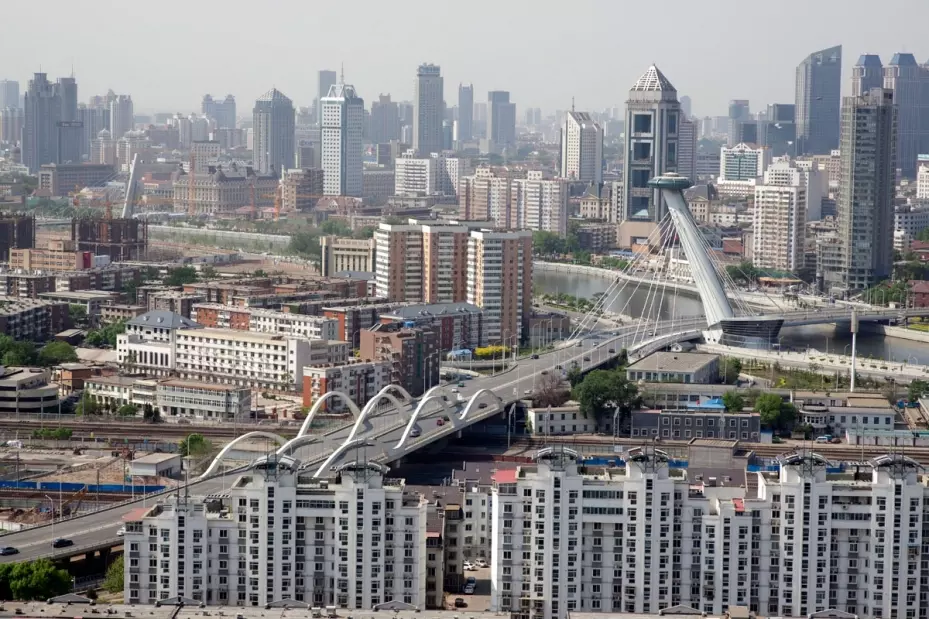What does urban resilience mean for you?

The Chinese government is undertaking an exceptional project entitled “Jing-Jin-Ji”.
Merging the cities of Beijing and Tianjin with the industrial centers of Hebei Province, the authorities are looking to create the world’s largest megalopolis capable of supporting extremely fast-paced growth. But does the city’s size in guarantee sustainable urban resilience? Planet garners two expert views.

> In the light of the dizzying expansion of Chinese cities, two schools of thought are going head-to-head: proponents of the development of megalopolises and those who favor smaller decentralized cities. Does the Jing-JinJi proposal provide a credible concept in sustainable urbanism?
Gu ShuZhong / While the question of scale is an important element in a city’s development the quality and viability of the project come first and foremost. In particular, the carrying capacity of resources and the environment and the carrying capacity of local resources, based on the population and industries, should be taken fully into account. If all of these questions are handled well, a city can be healthy and sustainable irrespective of its size. If this is not the case, even a small city can face problems such as water shortage, inefficient waste management and chronic air pollution.
Régis Calmels / The first was the creation of the Special Economic Zone in Shenzhen in the 1980s. The second was the creation of the state-level new area in the 1990s, implemented with great success in Pudong and ensuring Shanghai’s position today as one of the world’s most resilient and successful urban centers. The next logical step for China is the creation of the Jing-Jin-Ji megalopolis, drawing together the best urban management and infrastructure for economies of scale and sustainability.
> What are the biggest difficulties in ensuring social and environmental standards across such a large urban population?
R. C. / On a macroeconomic level, one of the most critical issues is governance: improving the organization, simplifying decisions, increasing efficiency and satisfying all of those involved. At Veolia we honor the commitments made to our stakeholders, especially our clients and staff. Implementing these commitments is usually more efficient if private companies are taking care of these issues.
G. SZ. / The governance of Chinese cities still has much room for improvement, whether this involves the management of city spaces, urban transportation, industry structures, the environment, etc. There are added challenges to the governance of Jing-JinJi: the administrative systems of the cities are separated. It is therefore essential to enhance coordination among the three cities and provinces, and establish a coordinating organization on a central level. The collaborative development of Beijing, Tianjin and Hebei already enjoys consensus among the people living within the region. Jing-Jin-Ji now has a mechanism to steer the region’s development, with a view to creating synergies.
> How could a megalopolis offer a solution to China’s urgent resources challenge?
R. C. / A megalopolis generates tremendous economies of scale on many levels, in terms of optimized decision-making. Veolia already has city water supply and hazardous waste projects in Tianjin, working side by side with the municipal government and a number of industrial clients. With common decisions taken across a larger region, Veolia could deliver a much wider array of innovative solutions. For example, in Jing-Jin-Ji, there are many opportunities to develop common networks for cooling or heating, leading to energy savings and thus positive impacts on air quality.
> What role will private companies and non-governmental agencies play in ensuring the resilience of China’s urban populations?
G. SZ. / City governance needs the joint efforts of all stakeholders, starting with private companies. Well-reputed private companies with recognized expertise play an undeniable role in city governance, particularly in urban water services and solid waste disposal.
R. C. / The challenge lies in building urban resilience and meeting the demands of a growing city whilst constantly improving the quality of service provided. Veolia is already a leading reference company in China’s urban areas, particularly in Shenzhen, Shanghai, Tianjin and Harbin. It is now looking to establish new partnerships, especially with industries in China, in order to continue to offer innovative solutions in the fields of waste management, water and energy services.
Partnerships for preserving resources
Conservation is the key to megalopolis resilience. At the chemical firm Tianjin Soda, Veolia has developed a pilot industrial wastewater reuse project.
As part of its concession agreement for drinking water and wastewater treatment for the Tianjin Shibei region, Veolia has also implemented an advanced non-revenue water project that will save millions of tons of water over the project’s lifetime. In Tianjin, Veolia opened the first integrated hazardous waste treatment-disposal recycling center.

